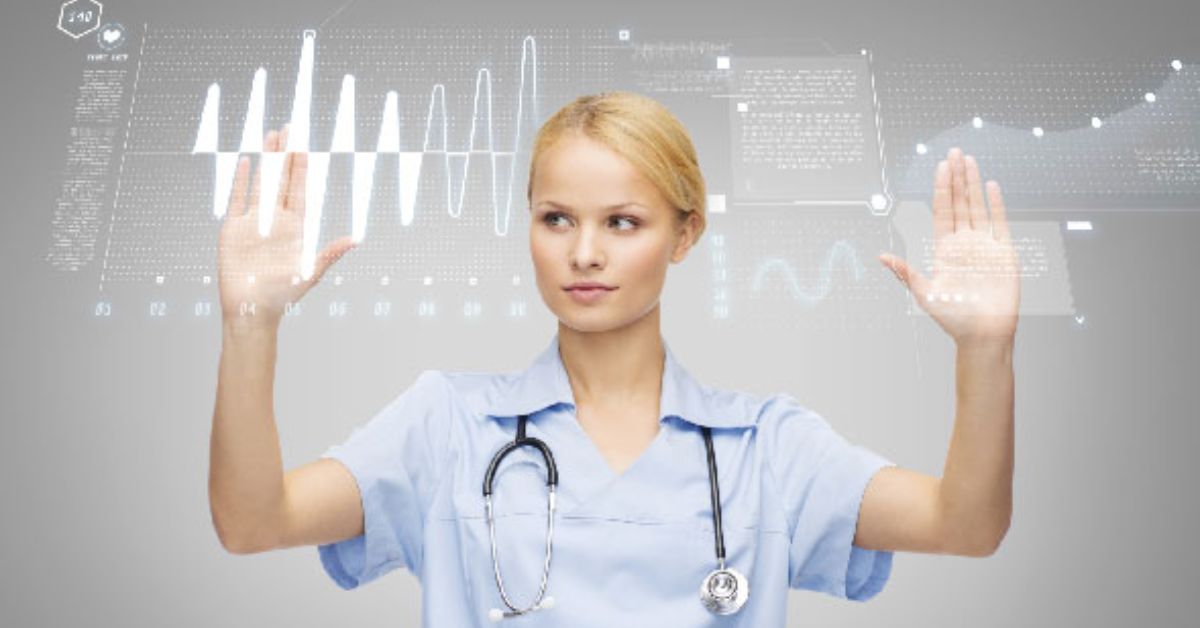Technology continues to reshape modern healthcare, offering innovative tools and methods that drive efficiency, accuracy, and improved patient outcomes. In the nursing field, these developments are particularly impactful, as nurses often serve as the frontline of patient interaction. This comprehensive guide explores the latest advancements in nursing technology, examining how each innovation transforms the profession.
From telehealth platforms to wearable monitoring devices, the integration of these solutions is revolutionizing how nurses provide care, coordinate with other healthcare professionals, and engage patients.
In This Article
1. Introduction to Nursing Technology
Nursing technology encompasses a wide range of digital tools and equipment that support clinical decision-making, patient monitoring, and administrative tasks. As the demand for healthcare services grows worldwide, nurses face increasing workloads and complex patient needs. Technological advancements help address these challenges by automating repetitive tasks, providing real-time patient data, and enabling virtual collaboration.
- Evolving Role of Nurses: Nurses are no longer limited to bedside care; they now leverage various forms of technology to interpret data, manage resources, and assist in research. This shift increases their capacity to offer personalized and efficient care.
- Accessibility and Efficiency: Tools like electronic health records (EHRs), telehealth platforms, and digital monitoring devices streamline workflows and reduce the margin of error.
- Future Outlook: Continued innovation ensures that nurses remain at the forefront of patient-focused solutions. By embracing new technologies, nurses can adapt to a rapidly changing healthcare landscape and continue to deliver high-quality care.
Nursing technology represents more than just gadgets; it is a catalyst for improving patient safety, enhancing collaboration, and supporting evidence-based practice. In the sections that follow, we will examine specific technological domains, illustrating how each one shapes the future of nursing and ultimately transforms healthcare delivery.
2. Electronic Health Records (EHRs)
Electronic Health Records (EHRs) are digital versions of patients’ paper charts, providing a comprehensive view of medical histories, diagnoses, treatment plans, and more. For nurses, EHRs offer quick access to relevant patient information, streamline documentation, and minimize transcription errors.
- Real-Time Updates: Because EHRs integrate data from multiple providers, they give nurses access to updated patient information at the point of care. This improves decision-making, particularly when time is critical.
- Reduction of Errors: Manual charting can lead to transcription and interpretation errors. EHR systems standardize entries, use drop-down menus, and highlight discrepancies, reducing the likelihood of mistakes.
- Coordination with Other Departments: EHRs enhance interdepartmental collaboration. Physicians, pharmacists, and specialists all access the same platform, promoting continuity of care and reducing communication gaps.
- Analytics and Reporting: Some EHR systems include analytical tools that help nurses track patient vitals and detect early warning signs of complications. This data-driven approach aids in creating evidence-based care plans.
Despite their many benefits, EHR implementations sometimes face usability challenges. Nurses must receive adequate training to navigate complex interfaces and maintain data accuracy. Over time, as user interfaces improve and healthcare professionals become more familiar with digital documentation, EHRs will continue to play a central role in patient care and safety.
3. Telehealth and Remote Patient Monitoring
Telehealth refers to the delivery of healthcare services and information via digital platforms. Through video conferencing, messaging, and mobile applications, nurses can connect with patients regardless of geographical barriers. This technology became especially prominent during global health emergencies, enabling patients to receive care without visiting crowded facilities.
- Virtual Consultations: Telehealth platforms allow nurses to conduct follow-up visits, provide health education, and assess minor health concerns in real time. Patients benefit from reduced travel costs and waiting times.
- Remote Patient Monitoring (RPM): Wearable devices and home monitoring kits send critical data (like blood pressure, blood glucose levels, and oxygen saturation) to healthcare teams. Nurses review these metrics, identify trends, and intervene if they see alarming changes.
- Enhanced Accessibility: Rural areas and underserved communities often lack specialty services. Telehealth extends specialized nursing care to these regions, improving health equity.
- Disease Management Programs: Patients with chronic conditions such as diabetes or hypertension can receive regular check-ins through telehealth. Nurses track their progress, adjust care plans when necessary, and encourage adherence to medication schedules.
By fostering ongoing communication, telehealth and RPM empower patients to manage their health proactively. Nurses can use these platforms to provide education on lifestyle choices, medication usage, and self-care strategies. Telehealth is more than just a convenience; it holds the potential to reduce hospital readmissions, lower healthcare costs, and promote healthier communities.
4. Wearable Devices and Sensors
Wearable devices and sensors have become increasingly popular among consumers, with applications extending far beyond fitness tracking. In clinical settings, these devices offer valuable insights into patient well-being, enabling nurses to respond proactively.
- Continuous Monitoring: Smartwatches and specialized sensors track vital signs (heart rate, blood pressure, activity levels) around the clock. When used in hospital or home settings, these readings can be transmitted to nursing stations in real time.
- Early Intervention: Trends in vital signs often reveal health issues before they become severe. By analyzing data patterns, nurses can coordinate timely medical interventions.
- Chronic Disease Management: Patients with chronic illnesses benefit from having daily logs of their physiological data. Wearables can prompt users to take medications, monitor symptoms, and remind them of upcoming appointments.
- Patient Engagement: Interactive apps paired with wearable devices encourage patients to set goals and monitor their progress. This increased engagement promotes adherence to treatment plans and fosters a collaborative nurse-patient relationship.
Privacy and data security remain major concerns, given the large volumes of personal health data wearables generate. Still, the benefits of improved patient monitoring and education often outweigh the risks when systems are properly encrypted and regulated. As wearables become more sophisticated, nurses can anticipate even richer data streams, fueling personalized care and better patient outcomes.
5. Smart Beds and Automated IV Pumps
Hospitals increasingly integrate smart beds and automated IV pumps to optimize patient comfort and medication delivery. These technologies simplify manual tasks and reduce the likelihood of human error.
- Smart Beds: Equipped with sensors, smart beds can automatically adjust to maintain the ideal incline, pressure, and support. If a patient attempts to leave the bed without assistance, the bed may send an alert to the nursing station. Vital sign sensors can also be incorporated, offering continuous updates without the need for manual checks.
- Automated IV Pumps: Traditionally, nurses must calculate drip rates and monitor IV lines closely. Automated pumps can be programmed with precise medication dosages, ensuring consistent and accurate delivery. They can also include built-in safety checks that alert nurses if there is a blockage or if the medication dosage exceeds safe limits.
- Streamlined Workflow: These innovations reduce the time nurses spend on repetitive tasks such as manual adjustments or drip calculations, allowing more focus on patient education and care coordination.
- Enhanced Patient Safety: Automated systems minimize the chance of miscalculation or oversight, directly impacting patient outcomes. For instance, smart pumps can pause an infusion if they detect that a patient’s vital signs have changed drastically.
Smart beds and automated IV pumps highlight how technology can seamlessly blend with traditional care practices. By automating routine tasks, these tools enable nurses to prioritize patient interaction, emotional support, and thorough assessments—areas that require the uniquely human touch that technology cannot replace.
6. AI and Machine Learning in Nursing
Artificial Intelligence (AI) and machine learning algorithms analyze large volumes of healthcare data to find patterns, predict outcomes, and support clinical decision-making. Nurses benefit from these insights, which often translate into more accurate diagnoses and personalized treatment strategies.
- Predictive Analytics: Machine learning models can analyze patient records and identify those at higher risk for complications like infections or readmissions. This allows nurses to implement preventative measures proactively.
- Clinical Decision Support Systems (CDSS): Integrated with EHRs, these systems provide evidence-based guidelines in real time. Nurses receive automated suggestions or alerts if a patient’s data indicates a potential issue that requires intervention.
- Natural Language Processing (NLP): Healthcare professionals can use voice recognition or text analysis tools to summarize patient interactions and reduce the time spent on documentation. This frees up more time for patient care.
- Population Health Management: AI-driven platforms can segment entire populations based on risk factors, allowing public health nurses to target interventions more effectively and improve community health outcomes.
However, the complexity of these models raises concerns about data bias and ethical decision-making. Nurses must collaborate with data scientists and stakeholders to validate these tools, ensuring they support rather than replace clinical judgment. When responsibly implemented, AI and machine learning can be formidable allies, promoting safer and more efficient nursing practices.
7. Robotics in Nursing
While the thought of robots might conjure images of science fiction, robotic technology in healthcare is increasingly real. Robots serve various functions, from assisting with surgeries to delivering supplies, freeing nurses to focus on tasks that require critical thinking and human interaction.
- Surgical Assistance: Robotic arms facilitate minimally invasive surgeries, improving precision and reducing patient recovery times. Although surgeons primarily control these devices, perioperative nurses also benefit from advanced tools that stabilize procedures and minimize complications.
- Automated Delivery Systems: Hospital robots can transport medications, meals, and linens between floors, reducing the time nurses spend on logistical errands. This allows for more direct patient care and thorough monitoring.
- Patient Lifting and Transfer: Some robotic systems are designed to assist with lifting and repositioning patients, reducing the risk of musculoskeletal injuries among nursing staff.
- Social Support Robots: Experimental robots can provide companionship to patients, especially in long-term care settings. Nurses can program them to remind patients about medication schedules or exercise routines, though direct human care remains vital.
Robotics may never replace the compassion and empathy of a human nurse, but they can significantly reduce physical strain and improve efficiency in clinical settings. As technology advances, nurses and robots may form integrated teams, each bringing distinct strengths to patient care.
8. Big Data and Predictive Analytics
The healthcare industry generates an immense amount of data every day. Big data refers to this vast pool of information from EHRs, wearable devices, lab tests, and more. Predictive analytics involves examining these datasets to forecast health trends and outcomes.
- Resource Allocation: Hospitals use predictive models to estimate staffing needs, anticipate patient influxes (e.g., during flu season), and manage inventory more effectively. Nurses benefit from balanced workloads and reduced stress in well-prepared units.
- Disease Outbreak Prediction: By analyzing population-level data, public health nurses can identify emerging trends in infectious disease patterns. Early warnings lead to preventive measures that contain outbreaks.
- Personalized Care Plans: Big data helps develop specialized care interventions, especially for chronic illnesses. Through pattern recognition, nurses can tailor patient education and follow-up plans to improve adherence.
- Quality Improvement: Data analytics identifies bottlenecks in patient workflows. Tracking patient satisfaction and outcomes also guides improvement initiatives that shape policies and best practices.
Though the possibilities are exciting, managing big data raises concerns about patient privacy and data security. Robust encryption methods and compliance with regulations (such as HIPAA in the United States) are essential. Properly leveraged, big data and predictive analytics empower nurses to practice proactive, informed care that significantly improves patient results.
9. Virtual Reality (VR) and Augmented Reality (AR)
Virtual Reality (VR) and Augmented Reality (AR) tools are revolutionizing both nursing education and clinical practice. These immersive technologies offer new ways to simulate complex scenarios, train nurses, and enhance patient understanding.
- Clinical Simulations: Nursing students can practice procedural skills in virtual environments that mimic real-life settings. Simulations range from inserting IV lines to dealing with high-risk emergencies, allowing for repeated practice without putting patients at risk.
- Pain Management: VR therapy can distract patients from pain, particularly during wound care or physical therapy sessions. Nurses incorporate VR into care plans to reduce anxiety and discomfort, especially for pediatric or burn patients.
- Enhanced Visualizations: AR applications overlay digital data onto the physical world. Nurses can use AR headsets to see patient vitals, step-by-step procedure guides, or anatomical structures in real time.
- Reduced Training Costs: Because VR and AR simulations eliminate the need for expensive physical equipment or repeated use of consumables, educational institutions and hospitals can lower training expenses while improving skill proficiency.
However, cost and accessibility remain hurdles for widespread implementation. Ongoing research will determine how to optimize VR and AR for various healthcare contexts. As these technologies mature, they have the potential to significantly expand the scope and quality of nursing education and patient care.
10. Blockchain Technology in Healthcare
Blockchain technology, best known for securing cryptocurrency transactions, is gaining traction in healthcare for its ability to secure records and ensure data integrity. Although still emerging, blockchain has several potential applications that could benefit nurses.
- Immutable Records: Once data is entered into a blockchain, it becomes nearly impossible to alter. This permanence ensures patient records remain accurate and reduces the likelihood of tampering.
- Secure Data Sharing: Using blockchain, healthcare providers can exchange patient information more reliably. Nurses can access essential data from different institutions quickly, improving care coordination.
- Supply Chain Management: Blockchain helps track medications and medical supplies from manufacturers to hospitals, reducing counterfeiting and ensuring that the right resources reach nurses on time.
- Patient Empowerment: Patients can control access to their health data, granting or revoking permissions to different providers. Nurses benefit from this transparency, knowing they have the complete and most recent information.
While blockchain’s adoption in healthcare is still in the early stages, its potential to streamline data sharing and secure patient records is noteworthy. Over time, this technology could help nurses maintain accurate documentation and ensure that vital information follows patients across various care settings.
11. Challenges and Ethical Considerations
The rapid evolution of nursing technology comes with unique challenges and ethical questions. As devices become more advanced, nurses must remain vigilant about how these tools are used and the potential ramifications for patient rights.
- Privacy and Security: EHRs, wearables, and remote monitoring systems gather personal health information. Safeguarding this data is essential to maintain patient trust and comply with regulations.
- Technology Reliability: System downtime or device malfunctions could hamper care delivery. Nurses need contingency plans to ensure that patient care remains uninterrupted.
- Bias in Algorithms: AI-driven tools rely on historical data. If that data is incomplete or contains biases, algorithmic suggestions might inadvertently contribute to disparities in care.
- Workforce Adaptation: Not all nursing staff adapt to new technologies at the same pace. Employers must offer comprehensive training and ongoing support to minimize frustrations and maximize adoption.
Balancing innovation with ethical practice is fundamental. The human element remains central to nursing, so technology should be seen as an aid, not a replacement. By establishing clear guidelines and best practices, nurses can leverage the benefits of these tools while minimizing risks.
12. Training and Education for Technology Integration
Educational institutions and healthcare organizations play a critical role in preparing nurses to work in technology-rich environments. This training must be both theoretical and hands-on, ensuring that nurses gain confidence in operating and interpreting various systems.
- Undergraduate Curricula: Nursing programs now include modules on informatics, telehealth, data analytics, and basic programming concepts. This grounding helps new nurses transition into clinical settings more easily.
- Continuing Education: Rapid changes in healthcare technology make ongoing professional development essential. Workshops, online modules, and certification programs keep practicing nurses current on best practices.
- Simulation Labs: By replicating real-world scenarios, simulation labs offer a controlled environment where nurses can learn from mistakes without risking patient safety. Lab sessions can feature EHR platforms, robotic devices, or VR simulations.
- Mentorship and Collaboration: Pairing tech-savvy nurses with those less comfortable using digital tools fosters knowledge exchange. These mentorship programs help integrate technology into daily routines more smoothly.
Proper training ensures nurses feel supported and competent, ultimately enhancing patient care. As the demand for technology skills grows, education that equips nurses with these capabilities becomes a cornerstone of modern nursing practice.
13. The Future of Nursing Technology
The future of nursing technology holds immense promise, characterized by greater interoperability, artificial intelligence advancements, and patient-centered platforms. Several trends could shape nursing in the coming years:
- Personalized Medicine: As genetic testing becomes more accessible, nurses will use advanced analytics to customize treatment plans. Wearables and AI tools will help maintain ongoing insights into patient health.
- 5G Connectivity: Faster internet speeds will enhance telehealth services, enabling high-quality video consultations and even remote robotic surgeries. Nurses can expect more seamless virtual interactions with patients.
- Smart Hospitals: Facilities may rely on interconnected devices, from AI-driven cleaning robots to sensors tracking patient flow. This ecosystem will streamline tasks, assisting nurses with patient care and administrative duties.
- Preventative Healthcare: Greater access to real-time data and sophisticated analytical tools will shift healthcare emphasis from reactive treatment to preventative strategies, with nurses playing a pivotal role in community education and early intervention.
- Global Collaboration: International nurse networks can collaborate online, sharing best practices and research findings. Digital platforms will facilitate a global exchange of expertise, benefiting patients worldwide.
While new solutions hold transformative potential, they must align with ethical frameworks and clinical guidelines. Nurses will need to remain adaptable, continuously updating their skills to keep pace with technological evolution.
Also Read:
- Addressing the Nursing Shortage: Strategies and Solutions
- The Impact of Telehealth on Modern Nursing Practices
Conclusion:
Advancements in nursing technology present both opportunities and responsibilities. From electronic health records and telehealth platforms to AI-driven tools and robotics, these innovations are revolutionizing patient care, administrative tasks, and collaborative efforts across the healthcare spectrum. By automating routine responsibilities, they free nurses to focus on critical thinking, empathy, and patient engagement—the hallmarks of excellent nursing practice.
Effective implementation depends on comprehensive training, well-defined ethical considerations, and an ongoing commitment to data security. Healthcare leaders must invest in resources and infrastructure that support nurses’ adoption of these tools, promoting a culture of continuous learning and collaboration. At the same time, nurses themselves should embrace the growth mindset necessary to integrate technology into everyday practice without sacrificing the personal connection that patients rely on.
As technology continues to evolve, nurses stand at the crossroads of innovation and patient advocacy. By harnessing these powerful tools responsibly, they can ensure better patient outcomes, streamlined workflows, and a more efficient healthcare system. Nursing technology is not merely about cutting-edge devices and software; it is about amplifying the profession’s core values—compassion, competence, and patient-centered care—through modern solutions.







